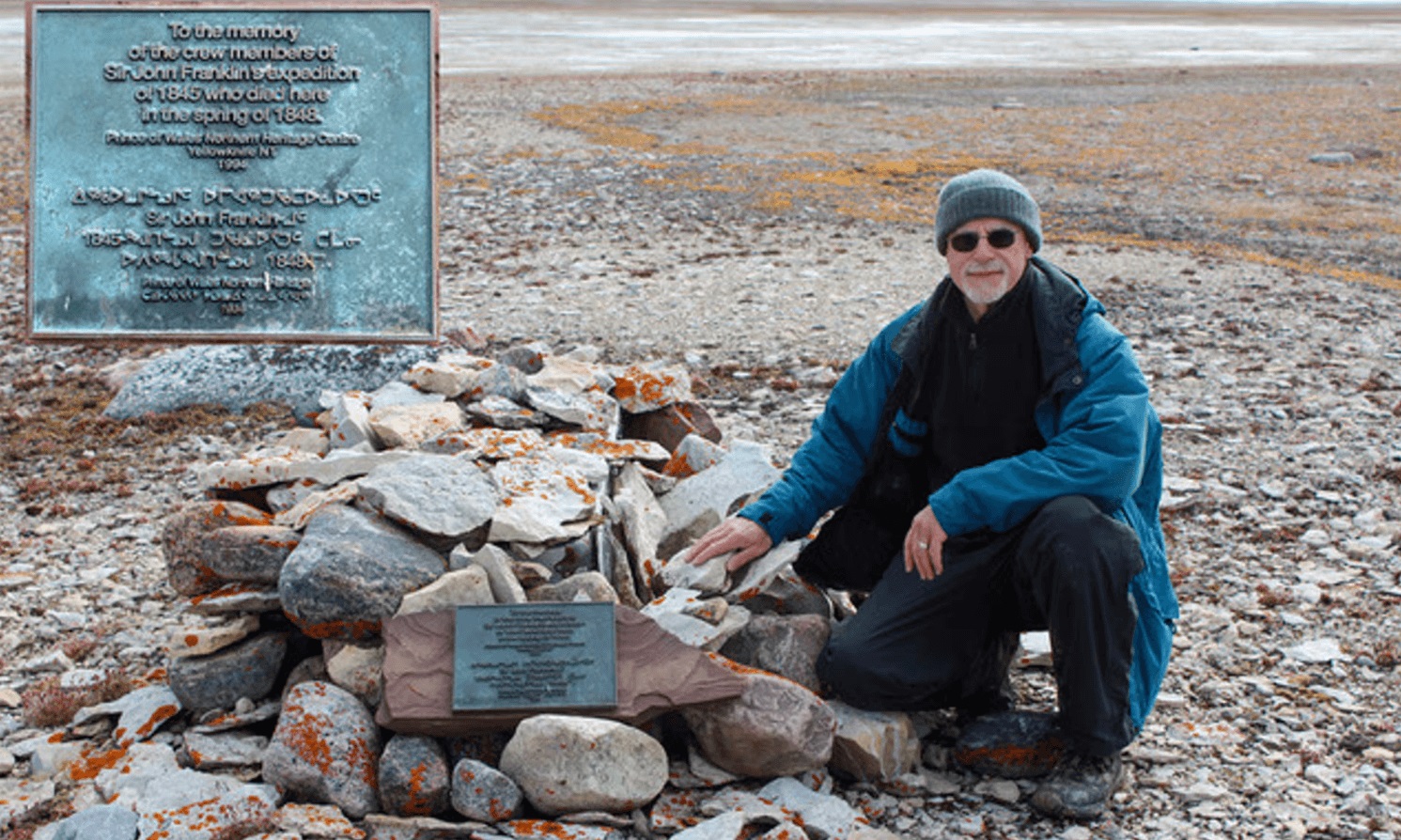One of the brave sailors who was lost in Franklin’s ill-fated Arctic expedition of 1845 has been identified using a DNA sample. His name was Captain James Fitzjames, a senior officer onboard HMS Erebus born on July 27, 1813. In a grim twist, the latest study of his remains highlights another dark facet of the voyage’s story: Fitzjames was likely subjected to cannibalism by his fellow shipmates.
Fitzjames was identified using genetic and genealogical analyses by scientists at the University of Waterloo and Lakehead University in Canada.
His DNA was obtained from a tooth found at the archaeological site on King William Island in the Canadian territory of Nunavut, where 451 bones from at least 13 Franklin sailors have been discovered. The remains were then genetically matched to a DNA sample from a living descendant,
“We worked with a good quality sample that allowed us to generate a Y-chromosome profile, and we were lucky enough to obtain a match,” Stephen Fratpietro, a Technical Manager at Lakehead University’s Paleo-DNA lab, said in a statement.
He’s only the second person from the 105-strong crew to be positively identified, joining an engineer named John Gregory whom the team identified in 2021 using similar methods.
A 2010 biography of Fitzjames suggests that he was the illegitimate son of Sir James Gambier (1772–1844) and a woman whose true identity is unknown but was listed on church documents as “Ann Fitzjames”.

Douglas Stenton at a commemorative cairn where the remains of James Fitzjames and twelve other Franklin expedition sailors rest.
Image credit: R. Park
It was through the genealogy of the Gambiers, a well-to-do family of diplomats and naval officers, that the living descendant of Fitzjames was found. The study explains: “the DNA donor is a second cousin of Fitzjames five times removed and is linked to him through two of James Gambier’s sons.”
The remains of Fitzjames, as well as some the other sailors who perished with him, now rest in a memorial cairn at the site with a commemorative plaque.
Franklin’s Lost Expedition was an ill-fated British voyage that attempted to traverse the last unnavigated sections of the Northwest Passage, an ice-riddled sea route between the Atlantic and Pacific oceans that promised to open up global trade.
Under the command of Sir John Franklin, the two ships, HMS Erebus and HMS Terror, left England in 1845 but became icebound around the Canadian Arctic in 1848. All members of the expedition eventually perished from the extreme cold, starvation, and scurvy, exacerbated by lead poisoning from the solder used to seal up their cans of food.
Much of the story is shrouded in mystery, but it has been pieced together through the reports of local Inuit people, letters written prior to the crew’s disappearance, and the forensic examinations of the crew’s remains. The wrecks of the two ships were discovered in 2014 and 2016, adding new information to the story.
When rescue crews contacted Inuit people in the 1850s, they said they had seen evidence that survivors had resorted to cannibalism. The latest study of Fitzjames grimly affirms their accounts. Three-dimensional scans of his mandible (jawbone) reveal clear evidence of cut marks, suggesting his remains had been butchered and eaten by his desperate crewmembers.
“It demonstrates the level of desperation that the Franklin sailors must have felt to do something they would have considered abhorrent,” explained Dr. Robert Park, an anthropology professor at the University of Waterloo.
“This shows that he predeceased at least some of the other sailors who perished, and that neither rank nor status was the governing principle in the final desperate days of the expedition as they strove to save themselves,” added Dr Douglas Stenton, adjunct professor of anthropology at the university.
The study is published in the Journal of Archaeological Science: Reports.
Source Link: Second Member Of Lost 1845 Arctic Expedition Identified, Along With His Grim Fate